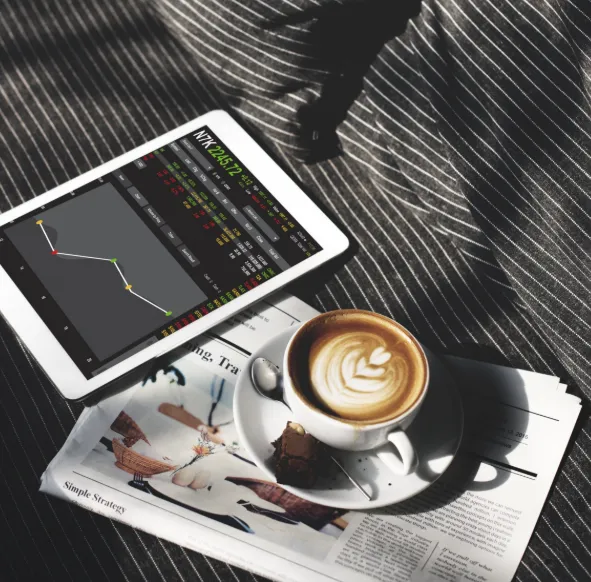Day trading is an appealing option for those looking to make quick profits, but it is also a strategy that comes with its share of risks. If you’re new to this world, it’s essential to understand the basics before diving in. This guide will give you a solid foundation in day trading, including how it works, the potential for profits, and the risks you need to consider.
What is Day Trading?
In simple terms, day trading involves buying and selling financial assets within the same trading day. The goal is to take advantage of short-term price fluctuations in stocks, options, currencies, or other securities. Traders aim to make a profit by buying low and selling high within a single day.
For example, if you purchase 1,000 shares of a stock at $10 each and sell them an hour later at $10.50 per share, your profit would be $500. This simple strategy highlights the essence of day trading: quick, profit-driven trades that capitalize on market volatility.
Is Day Trading Legal?
Yes, day trading is completely legal as long as you follow the rules and regulations. However, it’s crucial to understand the risks involved. While the potential for profits is high, the volatility of the market can also lead to significant losses. Proper education and a clear strategy are key to becoming successful in day trading.
Pros and Cons of Day Trading
There are both benefits and challenges to day trading. On the positive side, day trading offers the potential for quick profits, especially if you can take advantage of price movements in the market. Additionally, you can profit from market volatility without the need to hold long-term assets.
However, day trading also comes with significant downsides. High transaction costs, the psychological pressure of making quick decisions, and the risk of large losses are all real challenges. It’s important to weigh these pros and cons before jumping into day trading.
Is Day Trading Profitable?
Day trading can indeed be profitable, but it requires skill, strategy, and experience. While some traders earn substantial returns, success in day trading depends on your ability to make informed decisions, manage risks effectively, and stick to a well-defined plan. If you start small, practice diligently, and learn the basics, day trading can lead to financial success.
Getting Started with Day Trading: Key Concepts for Beginners
If you want to succeed as a day trader, there are a few fundamental areas to focus on:
- Market Knowledge: To trade successfully, you need to understand the markets, including how they move and what factors influence price changes. Familiarizing yourself with stock markets, forex, and other asset markets is crucial.
- Risk Management: Day trading can be unpredictable, so having a solid risk management plan is essential. This includes setting stop-loss orders and knowing when to exit a trade to minimize potential losses.
- Trading Platforms: The platforms you use to execute trades are critical. These platforms should be reliable, user-friendly, and provide the tools you need to analyze the market and make informed decisions.
- Types of Day Trading: There are various types of day trading, such as pattern day trading. This involves executing four or more trades in a week and requires a minimum balance of $25,000 in your account. Traders often use margin accounts, borrowing funds from brokers to increase their buying power.
Paper Trading and Demo Accounts
Before you risk real money, it’s wise to practice using a demo account or paper trading. These tools allow you to simulate day trading without the financial risk. By practicing with virtual funds, you can familiarize yourself with market conditions and improve your trading strategy without losing money.
Day Trading Services and Tools
There are several tools and services that can make your day trading experience easier and more profitable:
- Alerts: You can set up notifications that inform you when certain price levels are reached or when a potential market trend emerges. Alerts help you stay on top of market movements without constantly watching the market.
- Day Trading Algorithms: Some traders use automated systems that execute trades based on pre-set conditions. These algorithms can quickly spot profitable opportunities and execute orders on behalf of the trader.
- Technical Indicators: These tools help you analyze market trends and make decisions based on price patterns, volume, and other metrics. Common indicators include the Moving Average, RSI, and Bollinger Bands.
Can You Make a Living from Day Trading?
While it’s possible to make a living from day trading, it requires considerable knowledge, practice, and discipline. Most successful traders spend years developing their skills and learning from their mistakes. Start by dedicating time to study, using demo accounts to practice, and slowly scaling up your trades as you gain confidence.
Conclusion
Day trading can be a lucrative endeavor, but it requires careful planning, discipline, and a clear understanding of the risks involved. By learning the basics, using the right tools, and following a structured approach, you can increase your chances of success in this fast-paced trading world. Remember to start small, practice consistently, and refine your strategies as you gain experience.













